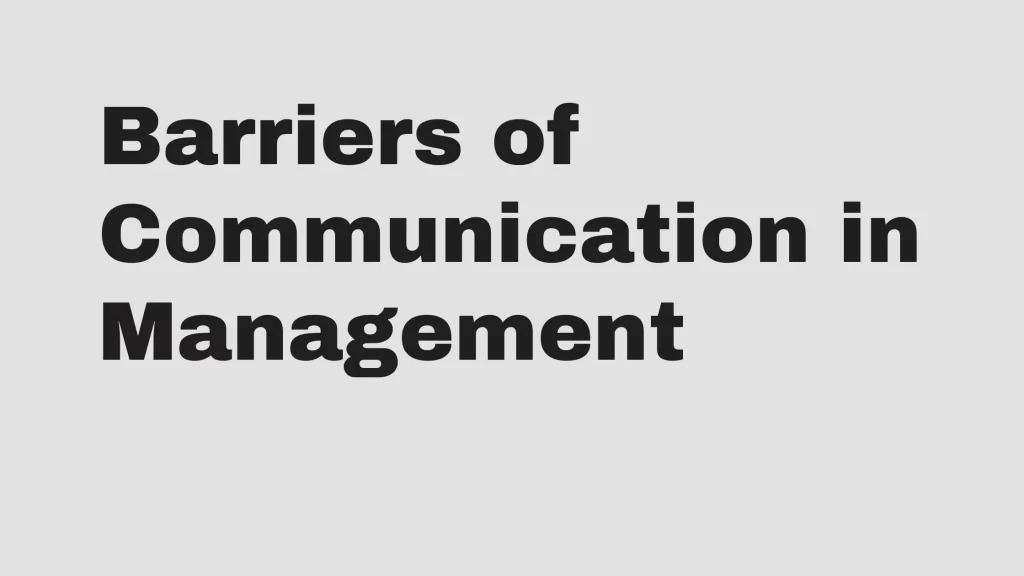Navigating the world of real estate can feel like trying to find your way through a maze, especially when communication barriers pop up. Whether you’re hunting for your dream home in Waddington or eyeing an investment property, clear communication is crucial. Yet, it’s often easier said than done.
Barriers to communication in real estate may include misinterpretation of complex legal terms and processes and difficulties in conveying property details effectively due to differing client perspectives and expectations.
I’ve seen firsthand how unknown status updates can create a fog of confusion in real estate transactions. The flurry of emails and phone calls can leave buyers and sellers feeling out of the loop. But fear not, with the right strategies and a bit of patience, these hurdles can be overcome. Let’s dive into how to tackle these barriers head-on and make your real estate journey a breeze.
Contents
Barriers of Communication in Real Estate
When navigating through the intricacies of real estate transactions, clear and effective communication emerges as paramount. Despite this, barriers often arise, complicating what should be straightforward interactions between buyers, sellers, and agents. I’ve encountered these hurdles firsthand and have seen how they can cloud the real estate journey. Let’s delve into some of these barriers, focusing particularly on the lack of clarity in property descriptions and language barriers with international clients.
Lack of Clarity in Property Descriptions

One common obstacle I’ve noticed is the lack of clarity in property descriptions. This isn’t just about the aesthetics or the physical attributes of a property, but also about the nuances that could significantly affect a buyer’s decision-making process. Property listings, for instance, might boast of a “spacious living area” or a “modern kitchen,” but these terms can be subjective. Without precise measurements or detailed descriptions, prospective buyers might find themselves disappointed or misled.
Furthermore, the devil often lies in the details that are omitted. A listing might fail to mention that the “quiet neighborhood” is slated for future development, potentially changing the area’s atmosphere. Or perhaps, the “fully renovated” home may still have outdated plumbing. These omissions or vague descriptions can lead to misunderstandings and frustrations, causing delays and potentially derailing transactions.
To overcome this barrier, I always recommend that both buyers and sellers insist on specificity in property descriptions. It’s crucial to ask pointed questions and seek out as much detail as possible. As an agent, I make it a point to provide comprehensive and precise descriptions in my listings, ensuring that my clients have a clear understanding of what they’re considering.
Language Barriers with International Clients
Navigating transactions with international clients introduces another layer of complexity: language barriers. In today’s globalized real estate market, it’s not uncommon to work with clients who speak a different language. This can create significant challenges, from basic communication mishaps to more profound misunderstandings regarding legal terms and transactional nuances.
Here are a few strategies that have helped me bridge this gap:
- Leveraging technology: Tools like translation apps and language learning software have been indispensable. They enable me to communicate basic information effectively, even in languages I’m not fluent in.
- Hiring interpreters: For more complex discussions or negotiations, bringing in a professional interpreter can ensure that nothing gets lost in translation.
- Cultural sensitivity: Beyond mere words, understanding a client’s cultural background can greatly improve communication. This might mean adapting to different negotiation styles or recognizing significant cultural norms that could influence a transaction.

While these strategies require additional effort and sometimes incur extra costs, the investment is well worth it. Facilitating smooth communication with international clients not only broadens my market reach but also fosters trust and confidence, laying the groundwork for successful, long-term business relationships.
Challenges in Real Estate Communication
Navigating the tricky waters of real estate communication isn’t always straightforward. I’ve noticed a couple of major hurdles that consistently pop up, each demanding its own strategy for successful navigation.
Miscommunication due to Technical Jargon
Let’s face it, the real estate industry is rife with specialized terms and acronyms that, to the uninitiated, might as well be a foreign language. From ARMs (Adjustable Rate Mortgages) to contingencies and escrows, it’s easy to see how communication can quickly break down if I’m not careful about the language I use with clients.
My approach? Simplify, simplify, simplify. I’ve learned that the key is not to dumb down information but to make it accessible. For instance, instead of saying “We need to examine the amortization schedule,” I might say, “Let’s look at how your loan payments are broken down over time.” It’s the same information, but framed in a way that’s much easier to grasp.
That said, there’s a delicate balance to maintain here. Use jargon sparingly, but don’t eliminate it entirely. It’s essential for clients to become familiar with some of this terminology, as it will help them navigate future real estate transactions more comfortably.
Communication Breakdown with Multiple Stakeholders
Real estate transactions never involve just the buyer and seller; they’re intricate dances that include a host of participants—from agents and brokers to lenders, inspectors, appraisers, and more. With so many people involved, keeping everyone on the same page becomes a herculean task.
I’ve found that the root of many communication issues lies in unknown status updates. Without a clear understanding of where we are in the process, stakeholders often find themselves asking, “What’s the next step?” This not only slows down the transaction but can lead to frustration and distrust.
To counter this, I’ve adopted a proactive approach to communication, ensuring that regular, clear updates are sent to all involved parties. Technology plays a crucial role here, with platforms that provide instant alerts and updates to everyone simultaneously, effectively eliminating the confusion that comes from playing telephone tag.

In my experience, addressing these challenges head-on not only smooths the path for the current transaction but lays the groundwork for lasting professional relationships. By fostering an environment where communication is clear, concise, and inclusive, I’ve seen firsthand how much smoother real estate transactions can be.
Strategies to Overcome Communication Barriers
In the realm of real estate, effective communication isn’t just a skill; it’s an essential bridge between me and my clients. Without it, misunderstandings become inevitable, potentially derailing transactions. That’s why I’ve honed specific strategies to cut through the fog of confusion and ensure my messages aren’t just heard but understood. Let’s delve into a few tactics that have transformed the way I interact in the industry.
Use Clear and Concise Language
First and foremost, simplicity is king. When dealing with complex transactions, the instinct might be to mirror this complexity in language. However, I’ve learned that the opposite approach is often more effective. By distilling property descriptions, contractual details, and negotiation points into straightforward language, I preempt confusion and keep my clients in the loop at every turn.
I’m a firm believer in the power of bullet points and short sentences to break down information. It’s not just about making things easy to read; it’s about ensuring clarity and comprehension. For example, instead of a lengthy paragraph detailing a property’s features, I opt for a bulleted list highlighting key attributes like:
- Location: Central, with access to public transport
- Size: 3 bedrooms, 2 bathrooms
- Amenities: Pool, gym, and a rooftop terrace
This method has significantly minimized misunderstandings and amplified client satisfaction.
Provide Translations and Language Support
Recognizing the diversity of my clientele, I’ve made it a priority to offer translations and language support. This isn’t merely about translating content word for word but ensuring the cultural nuances and meaning are conveyed effectively. I leverage professional translation services for documents and employ tools like real-time translation apps during meetings.
To support clients who speak different languages, I’ve also started learning key phrases in their native tongues. Expressing simple greetings or saying “thank you” in a client’s language goes a long way in building rapport and trust. Here’s a quick reference I’ve put together for my personal use:
| English | Spanish | Mandarin | Arabic |
|---|---|---|---|
| Thank you | Gracias | 谢谢 (Xièxiè) | شكرا (Shukran) |
| How are you? | ¿Cómo estás? | 你好吗? (Nǐ hǎo ma?) | كيف حالك؟ (Kayfa haluk) |
Finally, for complex discussions or negotiations, I don’t hesitate to bring in a professional interpreter. This ensures that both parties fully understand the nuances of the conversation, leaving no room for error.
Conclusion
Navigating the intricacies of communication in real estate doesn’t have to be a daunting task. By prioritizing clarity and inclusivity in our interactions, we can bridge the gap between diverse clients and the properties of their dreams. Whether it’s through sharpening our language skills, leveraging technology, or enlisting the help of interpreters, the goal remains the same: to foster understanding and trust. Let’s commit to breaking down these barriers, one conversation at a time, ensuring our clients are not just heard, but truly understood.
Boko Ducky has over 10 years of experience in helping individuals and organizations improve their communication skills.



